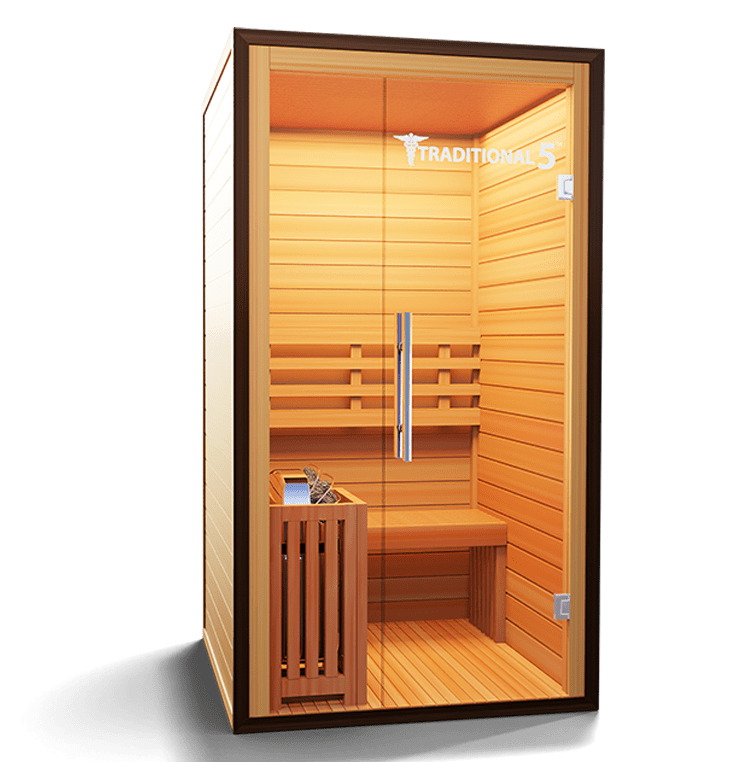The Best Guide To Traditional Sauna
The Best Guide To Traditional Sauna
Blog Article
4 Easy Facts About Traditional Sauna Shown
Table of ContentsA Biased View of Traditional SaunaGetting The Traditional Sauna To WorkGet This Report on Traditional SaunaSome Ideas on Traditional Sauna You Should Know
A lot of the weight lost in a sauna is water loss and is re-gained upon rehydrating. Without a doubt sauna can be an essential part of a healthy and balanced weight loss program. To look at the differences between typical and IR saunas, I will certainly divide these right into proven, academic, and fabricated differences.Hence, the best factor in the saunawhich goes to the ceiling straight above the sauna heateris typically between 185 and 190 F. Traditional Sauna. Claims that a traditional sauna exceeds 200 F is merely not real and not suitable for electric saunas marketed in the US. The temperature for a far-infrared sauna is usually established between 120 and 140 F; however, unlike the typical sauna, the goal in and IR area is not to accomplish a high temperature
Because of this, the temperature distinction is practically irrelevant, given that excessive sweating results in both sauna kinds, but the technique of heating the body is various. In an IR sauna the bather will really feel hot and will sweat a lot, however at much reduced temperatures. Hence, if the goal is to invest longer time periods in the sauna, the IR sauna is an excellent option.

A Biased View of Traditional Sauna
When the high temperature is achieved, the elements cycle on and off to maintain the high temperature. A lot of traditional sauna individuals enjoy putting water over the rocks to produce vapor to raise sauna humidity levels. The advantages of pouring water over the rocks include: making the room much more comfy, dampening the nasal flows, and enabling the use of aromatherapy by blending essential oils with the water.
In a far-infrared sauna, the heat waves permeate the body to successfully warm the body and elevate the body core temperature level. To accomplish this enhanced temperature level, Far-infrared emitters develop infrared energy which is close to the very same wavelength as that which the body naturally emitsoften described as the "Vital Range" of 7 to 14 microns), so the power is well obtained by the body.
When the energy gets in the body, it causes the body temperature level to raise and ultimately causes sweat. In an infrared sauna it is very important for the emitters/heaters to stay on nearly regularly. Given that there is no mass of rocks to retain heat, the sauna will cool if the emitters turned off.
As discussed above, the sauna bather in an infrared area intends to position this contact form himself before running emitters to get maximum gain from the heat. The home heating time for the 2 rooms can be really various, depending upon exactly how the rooms are used. For a typical sauna, a bather ought to allow 30-40 minutes for the room to accomplish a wanted temperature level and to correctly pre-heat the rocks.
The 7-Minute Rule for Traditional Sauna
A well constructed sauna will usually accomplish a temperature level of 150-160 F in regarding 30-40 minutes. For hotter temperature levels, the room may require to read the full info here warm for a longer period.
To some, 15 mins was "thrown away" while the infrared energy heated up the wood panels as opposed to warming a body, while others find a pre-heated area to be much more comfy and believe a raised beginning temperature is essential to start perspiring. The length of advised usage for every room is about the very same (10-15 minutes per session); nonetheless, because of the lower air temperature levels and the ability to really feel the impacts of infrared warmth faster than a typical sauna, it is not unusual for an individual to invest an overall of 20-30 minutes in an infrared sauna.
Standard saunas often tend to be larger (hence use even more power) than infrared saunas, although traditional saunas are certainly readily available in one and 2 individual sizes. For a two-person typical sauna, 5x6 or 5x7 size is most preferred. The leading bench can pleasantly seat two or 3 people and is also enough time to rest throughout the sauna session.


The typical expense per kWH of electricity in the united state is around $0.11, so a 4.5 kW heating unit will set you back about $.50 to run for one hour, if the heating system runs continually for one hour. Typically a sauna heater will certainly compete 75% of the initial hour and 50% of succeeding hours on considering that the components cycle once the established temperature level is achieved.
9 Easy Facts About Traditional Sauna Explained
A two person far-infrared room is generally physically smaller than a conventional sauna, frequently regarding 4' x 4' or smaller. The IR heating unit is normally 1.5-1.7 kW our website making use of a 120 volt 15 amp plug-in solution. Because the space can be utilized quicker than a sauna space, we will certainly presume the area is used for to of an hour consisting of warm up time.
Finally, there is a rarely gone over distinction in the social experience between the two areas. While our society has actually lost a few of the social advantage of the standard sauna experience, it can be really socially rewarding. From family members time in the sauna, to heart-felt conversations with loved ones, to sauna partiesthe typical sauna experience can result in intimate mingling.
The majority of higher end infrared areas include tinted light treatment, sound systems and full-glass fronts.
Report this page